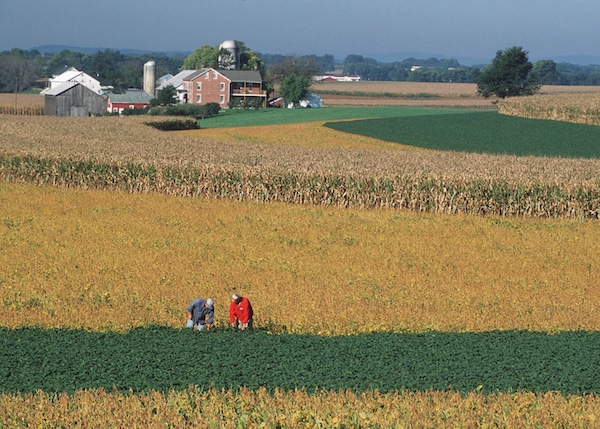August 23, 2013

The Iowa Nutrient Reduction Strategy, released this past May, lists annual cover crops as the most influential practice for reducing nitrogen loss from fields that are in continuous row crop production. The reason they work is largely because they take up nitrate from the soil in the fall and spring. Nitrogen stored in the organic matter created by the cover will be released over time, but depending on what the cover crop variety is and how much growth there was, the amount available for the next crop can vary significantly.
Like what you're reading? Subscribe to CSD Extra and get the latest news right to your inbox!
While there are edge-of-field structures and permanent seeding options that could make more of a difference, a properly seeded, well-established cover crop could reduce nitrate loading in waters by about 30%, according to the information collected by the science team advising those who wrote the Strategy.
So what are the steps for establishing a good cover crop stand?
1.Timely seeding. Experts say that in Iowa, seeding should be done in a standing crop of corn or soybeans, just as the leaves are beginning to turn. At that point, sunlight is starting to break through the canopy allowing the cover the necessary light to germinate.
2.Proper seed variety or mixture. A number of cover crops are available, including rye and other winter cereal grains, spring oats, annual rye grass, vetch, clover, radish and more. Some, like radish, spring oats, and annual ryegrass will not overwinter. Winter grains and perennials like clover may require herbicides to control them before planting row crops in the spring. Legumes, if seeded early enough, may also add nitrogen to the soil through their natural interaction with soil Rhizobia.
3. Seeding method. There are specific advantages to both aerial seeding and drilling cover crops. With aerial seeding, the seed can be applied more timely and much faster, but there could be germination problems, especially if moisture is limited. Seeding with a drill usually will result in better stand establishment but the seeding window is smaller, especially in years like this when the crop has been delayed, since the crop must be harvested before planting. A drill is a very good option if the cover crop seeding follows sweet corn or a silage or high-moisture grain harvest.
4. Seeding rate. Thin stands, even if established early, may not provide necessary soil protection over winter, and will not work well at sequestering excess nutrients from the soil. For aerial seeding a higher seeding rate is necessary than if the cover crop is drilled.
You might also like:
Weather extremes challenge nitrogen management
You May Also Like




